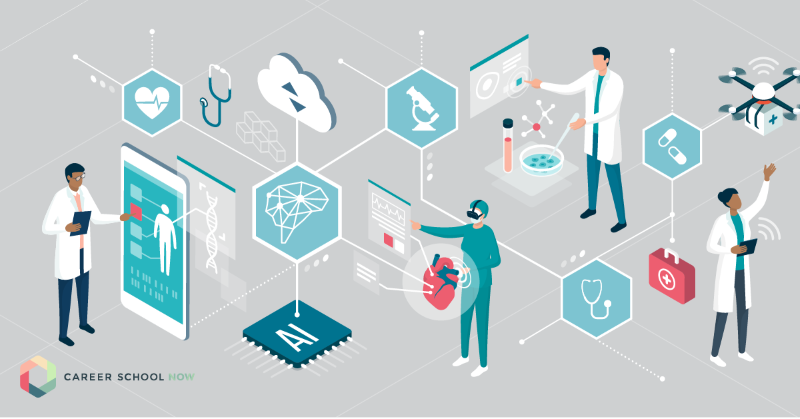Understanding the Secret Functions and Obligations in Medical Administration
Best Practices in Medical Administration for Improving Efficiency and Decreasing Costs
In the ever-evolving landscape of medical care, the pursuit of finest techniques in clinical administration is extremely important for enhancing effectiveness and suppressing expenses. By integrating innovative modern technologies such as electronic health and wellness documents and telemedicine, medical care carriers can improve operations and enhance person care.
Leveraging Advanced Innovation
In today's swiftly evolving health care landscape, leveraging sophisticated modern technology is no much longer optional but necessary for reliable medical management. The assimilation of electronic services into health care systems has actually transformed the method centers operate, improving procedures and enhancing client treatment. Electronic Health And Wellness Records (EHRs) are essential, providing comprehensive client data that can be accessed quickly by licensed employees, hence minimizing redundancy and decreasing mistakes. By centralizing client information, EHRs get rid of the requirement for difficult paperwork and help with smooth communication among medical care service providers.
Telemedicine is one more technical advancement that has changed individual interaction. It supplies comfort for both patients and medical care experts by enabling remote appointments, which can decrease the demand for in-person sees and optimize consultation scheduling. Furthermore, telehealth platforms can prolong healthcare access to country or underserved areas, linking gaps in treatment delivery.
Moreover, making use of Artificial Knowledge (AI) and machine discovering is becoming progressively prevalent in predictive analytics, permitting for very early discovery of potential wellness issues and even more enlightened decision-making. These innovations, when integrated properly, can improve analysis accuracy and customize person treatment strategies, eventually leading to boosted health care outcomes and operational effectiveness.
Optimizing Resource Allowance
By purposefully taking care of sources such as personnel, equipment, and finances, healthcare facilities can significantly enhance their functional efficiency, enhance client outcomes, and reduce unneeded expenses. The very first step in optimizing resource allotment involves carrying out a detailed assessment of current properties and identifying locations where sources may be underutilized or exhausted.
Prioritizing source allotment based on patient requirements and solution demands is necessary. Carrying out versatile staffing models can additionally optimize labor sources by adjusting personnel allotment in response to changing patient volumes.
Economic sources ought to be thoroughly kept an eye on and designated with calculated foresight to support both short-term operational demands and lasting institutional goals. This consists of investing in training programs that improve staff competencies and embracing energy-efficient practices that lower operational prices (medical administration). Inevitably, a maximized source allocation method promotes a lasting healthcare environment that is responsive, reliable, and financially sensible
Streamlining Workflow Processes
When medical care centers goal to boost operational efficiency, improving workflow procedures ends up being a pivotal focus. Efficient operations minimize redundancy, eliminate unnecessary steps, and improve control among medical care professionals. This method not just accelerates solution shipment yet likewise boosts the high quality of individual care.

Next, innovation combination plays a considerable function in simplifying operations. Carrying out electronic wellness records (EHRs) and computerized doctor order entrance (CPOE) systems reduces documentation, decreases human mistake, and guarantees information comes to all appropriate employees. Furthermore, leveraging telemedicine systems can enhance client assessments and follow-ups, decreasing the pressure on physical infrastructure.

Ultimately, structured operations lead to cost reductions and enhanced client fulfillment, fostering a more sustainable health care environment.
Enhancing Information Management
Building upon streamlined workflows, maximizing data monitoring ends up being an important component beforehand healthcare administration. Efficient data management systems are critical for preserving accurate person documents, boosting decision-making, and ensuring conformity with regulatory requirements. By applying robust information monitoring solutions, health care facilities can boost the quality of person care while at the same time minimizing functional expenses.
One key facet of improving data monitoring is the assimilation of innovative digital health and wellness record (EHR) systems. These systems promote the seamless exchange of client info across various divisions, lowering replication of examinations and lessening mistakes. A well-designed EHR system sustains information analytics, making it possible for doctor to recognize patterns and make educated decisions regarding client treatment.
Furthermore, securing person data is extremely important. Adopting thorough cybersecurity actions, consisting of security and routine audits, makes certain the stability and confidentiality of delicate info. This not only shields people however likewise maintains the institution's reputation.
Purchasing personnel training is an additional vital element. Enlightening health care experts on information management methods enhances their capability to properly use modern technology, leading to improved client results. In conclusion, boosting information management with sophisticated innovation and detailed training is necessary for attaining effectiveness and expense decrease in clinical management.
Fostering Collaborative Interaction
An important part in progressing medical administration is cultivating collective interaction amongst health care professionals. Reliable interaction is paramount for ensuring smooth individual treatment, optimizing therapy outcomes, and decreasing mistakes. By motivating open dialogue and control throughout multidisciplinary groups, health care companies can boost their operational effectiveness and reduce unnecessary prices.
Central to this method is the integration of interaction innovations such as electronic health and wellness documents (EHRs) and secure messaging systems, which facilitate the quick exchange of crucial person information. These tools make it possible for doctor to accessibility and share why not find out more data in real time, making certain that all employee are notified and aligned in their decision-making procedures. Additionally, routine group meetings and interdisciplinary rounds can further advertise a culture of partnership and liability.
Training programs focused on boosting interaction skills are additionally crucial. These programs can help team develop the ability to share details clearly and listen actively, therefore minimizing misconceptions and promoting a helpful work environment. Furthermore, taking on standard interaction methods, such as SBAR (Scenario, History, Analysis, Recommendation), can streamline the exchange of details, guaranteeing that important details are shared succinctly and effectively. Inevitably, promoting joint look at here now interaction results in boosted healthcare shipment and cost savings (medical administration).

Conclusion
Incorporating sophisticated modern technology, such as digital health and wellness records and telemedicine, alongside maximized source allotment and structured process procedures, is essential for improving performance in clinical administration. Efficient information management and cultivating collaborative interaction amongst medical care teams are vital for minimizing redundancies and enhancing care high quality. By prioritizing preventive care and participating in high quality enhancement initiatives, healthcare organizations can achieve substantial price financial savings and boosted patient end results, therefore ensuring sustainable medical care distribution in a significantly complex environment.